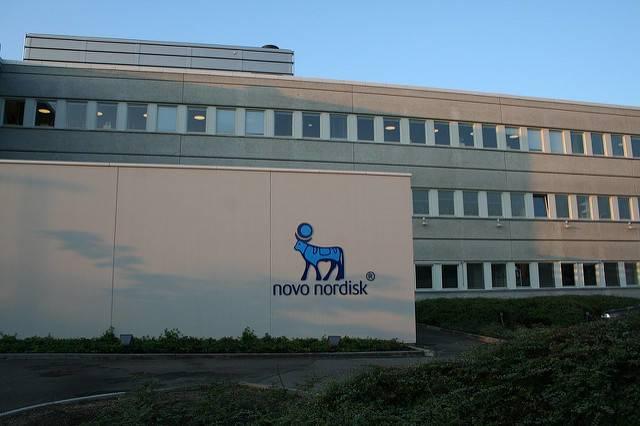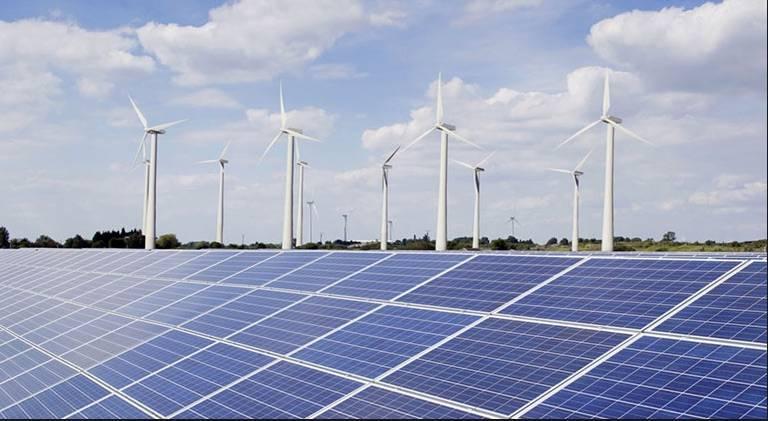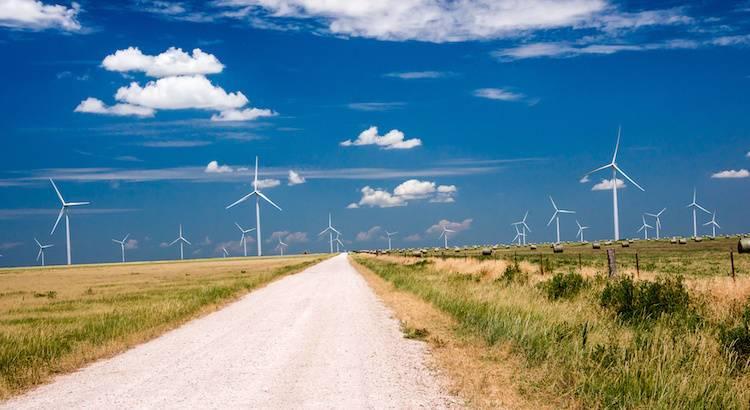ESG Investment Projected to Grow in 2018—So Are Risks


With chaos and tumult defining the news across the board, it's inevitable that major changes are roiling the socially responsible investment industry, with major implications for investors and public companies alike.
In the midst of this disruption, there are some definite clues to the future in Sustainalytics' fourth annual "10 for . . ." report, but its findings require thoughtful reading to properly assess the considerable insights.
In "10 for 2018," the independent corporate governance research firm issues a number of warnings along with its usual "upside" conclusions. While the report underlines that risk can also create opportunity, the threats it identifies in the coming year are significant ones. The bottom line is, that while major advances are being made in several areas of corporate practices and strategies regarding environmental, social, and governance (ESG) issues, investors will need to pay close attention to rapidly changing developments to ensure profits from this progress.
On the upside, Sustainalytics finds that ESG-driven investing will continue to increase in 2018. Global responsible investing now totals $23 trillion, a rise of 25 percent since 2014, according to the Global Sustainable Investment Alliance. To add to this inflow of “sustainable” capital, the global green bond market is estimated to reach $250-300 billion in 2018, up from $155 billion in 2017.
The rapid growth and large sums are a result of more widespread adoption of integrating ESG factors into decision-making, explains Sustainalytics CEO Michael Jantzi. “Investors are addressing the risks posed by climate change, pressing to make the workplace more diverse throughout the ranks, and encouraging transparency and innovation in the way business is performed . . .. Investors increasingly recognize that ESG considerations are part of their fiduciary duty as long-term stewards of capital.”
Jantzi cautions that this growth is accompanied by “profound” changes taking place in the asset management world. They include “the ongoing shift from active to passive management, the move from fundamental to data-driven strategies, and the increasing use of machine learning and artificial intelligence.” These changes will place “new demands on ESG research and data, and raise expectation for production innovation.”
As if these changes in traditional models and practices were not enough disruption, “10 for 2018” outlines 10 specific ESG risks for 10 sectors, from mining and chemicals to real estate and apparel. They include water management at a time of increasing scarcity, the ongoing challenge of climate change, new regulatory and legal constraints, and increasing demands from stakeholders for better governance.
As in previous “10 for . . .” reports, 10 companies are analyzed and measured in case studies for their exposure to risk. The report also looks back at the progress (or lack of it) made by the 10 companies examined in the 2017 report.
This year’s report displays a sobering shift in focus, from the exercises' previous emphasis on potential profit-making innovations to an in-depth examination of ESG risks to shareholder value. But it is also a milestone in the maturity of the responsible investment market: a reminder that major progress does not come free of equally significant challenges.
Photo: Sustainalytics
Drink to This: Heineken Seeks to Boost Renewables While Reducing Emissions


The popularity of micro-brews, along with consumers’ insistence that their favorite brands perform not only when it comes to quality, but also make a difference on social and environmental issues, means it is no longer as business as usual for the world’s largest beermakers.
To that end, Heineken has announced what it calls the “Drop the C” program in an effort to have renewables power 70 percent of the company’s operations by 2030.
This initiative follows several one-off projects Heineken has launched in recent years, including a 2016 announcement in which the company proclaimed it had cut the ribbon on the world’s first “zero carbon” brewery in Austria. Various solar installations atop some of its facilities are another tactic the company has adopted to reduce dependence on fossil fuels.
Currently, Heineken says it is procuring 14 percent of its power needs from renewable sources. So how can the company increase that amount five-fold within the next 12 years? The company acknowledges that it faces many hurdles, as many of its recent acquisitions are located in developing countries across Africa, Asia and Latin America.
Heineken insists it is ready to reduce its carbon footprint by deploying different tactics within the markets in which it operates. In Vietnam, for example, Heineken says it has been sourcing rice husks from local farmers to fuel its brewing boilers. A world away in Brazil, a new biomass boiler was fired up in 2017 at a brewery in Ponta Grossa, using wood chips from certified reforestation companies.
Speaking of forests, Heineken says it will tackle more reforestation projects, which the company says will assist in offsetting carbon emissions while also improving local water preservation efforts. Currently, Heineken has launched reforestation projects in Indonesia, Mexico and Spain.
This new mindset is becoming anchored within the company’s day-to-day operations, too. Heineken claims it will begin carbon shadow pricing in order to push for more sustainable investments and arrive at decisions that can drive innovation - a change that is analogous to internal carbon pricing taken on by more and more companies like Microsoft and Volkswagen.
It is always a challenge for companies like Heineken to communicate why their carbon reduction efforts matter to stakeholders and consumers. But the brewer’s initiative should resonate with people in its simplicity. This "Drop the C” push has been inspired by the easy-to-remember fact that taking the “C” out of “CO2” leaves oxygen. The program not only imparts the importance that clean energy has in providing for cleaner air, but the play on words also gives assurance that the company is doing everything it can to prevent sea levels from continuing to rise.
Image credit: Heineken
IT Group Takes on Tech Addiction


By Brian Collett
Disillusioned former executives of Silicon Valley giants, including Apple, Facebook and Google, have started a campaign group to tackle the growing tech addiction menace.
The group is led by Tristan Harris, a mid-thirties professional who worked as a design ethicist at Google but now accuses the company of encouraging excessive tech use.
Harris, whose Google job was to develop the means for technology to influence “ethically” the thoughts and actions of billions of users, told the e-publication Quartz: “All the tech companies profit the more attention they extract out of human vessels. They profit by drilling into our brains to pull the attention out of it, by using persuasion techniques to keep them hooked.”
A particularly worrying danger of heavy social media usage, the campaign maintains, is depression.
One of the contentions of the group, known as the Center for Humane Technology, is that moderating the visuals on mobile telephones to make them less attractive could save some users from addiction.
The campaign includes a barrage of advertising in schools to educate parents, students and even children about tech addiction hazards, an appeal to Congress to write basic consumer protections into law, and a call for a tech designer’s Hippocratic Oath.
Its message to Washington and Silicon Valley from a February conference hosted by Common Sense Media, a San Francisco-based children’s advocacy group, was that if government and the industry will not deal with the issue, perhaps the public will.
Harris’s earlier non-profit initiative, Time Well Spent, which he established after leaving Google, was aimed at triggering change in the industry through public pressure, the development of ethical design standards, design education and policy recommendations to prevent “nefarious manipulation.”
Common Sense Media is a partner in the new campaign and is pouring millions of dollars into it.
Harris has an IT science degree from Stanford University with an emphasis on computer interaction. He spent three years with Google before forming Time Well Spent in 2016.
Today he says that without action the cause is lost. He told the Common Sense Media conference: “We cannot live in this world.”
Harris has scientific backing from Professor Robert Lustig, a pediatric endocrinologist at the University of California, San Francisco, who pointed out that computer game achievements give a child a dopamine hit.
Lustig said: “It tells you, ‘This feels good – I want more’. It is not a drug but it might as well be. It does the same thing.”
He quoted research showing a rise in depression and suicidal thoughts among young people in the past eight years.
Roger McNamee, an early Facebook investor and a member of the campaign group, admitted he was horrified by his contributions to the social media company.
He said: “This is an opportunity for me to correct a wrong.”
Photo: Flickr/Creative Commons
How Supermarkets Can (Really) Solve The Food Desert Problem


Solutions for the "food desert" problem in low income areas often focus on getting more supermarkets built in neighborhoods that lack them. However, a new study produced through the National Bureau of Economic Research challenges the effectiveness of that solution. That may be welcome news to major food retailers, which have not been particularly receptive to the idea of opening new grocery stores in the low-income areas usually associated with food deserts.
However, supermarkets can potentially offer other value factors -- convenience, wider selection, lower prices, job opportunities, and civic activities -- that are denied to communities that rely primarily on corner stores and small groceries. In other words, the study doesn't necessarily let the supermarket industry off the hook. Rather, it indicates that the brick-and-mortar solution is more complicated than simply bringing more food into food deserts.
What is a food desert?
Before getting to that new study, let's take a quick look at some earlier research that puts the brick-and-mortar approach to food deserts into question. In 2014, for example, PBS reported on a Philadelphia study showing that the introduction of a new supermarket did not significantly change local eating habits, though it did improve residents' perception of their neighborhood.
In 2015 the University of Minnesota released similar findings in a study titled, "Current Challenges in Determining the Impact of Food Deserts on Urban Childhood Nutrition and Health." It presents two main evidence-based findings:
Many urban residents have limited access to healthful and affordable foods.Children are most vulnerable to the growth and health impacts of poor nutrition.
The main findings also include two items indicating that there is simply not enough evidence to answer crucial questions:
It is unclear how living in an urban area with limited access to healthful and affordable food contributes to childhood growth and health.Numerous interventions have been proposed to address food deserts, however, limited scientific evaluations have been found that examine their specific impact on childhood health.
More broadly, the Minnesota study notes that the term "food desert" may not necessarily be a helpful framework for seeking solutions to a complex and multi-faceted issue:
‘Food desert’ is an emotionally charged term with no commonly accepted definition.
The US Department of Agriculture does provide a framework for defining food deserts through its Food Access Research Atlas. The Atlas identifies census tracts that are low income and experience low access.
Interestingly, back in 2011 USDA offered a specific definition for "food desert." The transition in framing to "food access" seems intended to defuse the charged atmosphere noted by the Minnesota study. The USDA Food Access Research Atlas, for example, was initially launched in 2011 as the "Food Desert Locator."
For the record, here is the 2011 definition as articulated in a USDA press release announcing the launch of the Food Desert Locator:
A food desert is a low-income census tract where either a substantial number or share of residents has low access to a supermarket or large grocery store. "Low income" tracts are defined as those where at least 20 percent of the people have income at or below the federal poverty levels for family size, or where median family income for the tract is at or below 80 percent of the surrounding area's median family income. Tracts qualify as "low access" tracts if at least 500 persons or 33 percent of their population live more than a mile from a supermarket or large grocery store (for rural census tracts, the distance is more than 10 miles).
Under the current name of Food Research Atlas, USDA explains -- at great length -- that "food desert" may be defined in different ways. Here is an introductory snippet:
There are many ways to measure food store access for individuals and for neighborhoods, and many ways to define which areas are food deserts—neighborhoods that lack healthy food sources. Most measures and definitions take into account at least some of the following indicators of access:Accessibility to sources of healthy food, as measured by distance to a store or by the number of stores in an area.
Individual-level resources that may affect accessibility, such as family income or vehicle availability.
Neighborhood-level indicators of resources, such as the average income of the neighborhood and the availability of public transportation.
Food deserts: it's complicated
The new study confirms that resolving the food desert issue is not as simple as improving access to food simply in terms of geographical location or access to transportation.
The full study, titled "The Geography of Poverty and Nutrition: Food Deserts and Food Choices Across the United States," was developed by economists from New York University, Stanford University and the University of Chicago." It is available online, but for those of you on the go the CityLab section of The Atlantic provides a good rundown.
Do read the full CityLab article for full details, but the gist of it is that the biggest differences in nutritional outcomes are not necessarily derived from where people live in relation to food sources, but from "deeper, more fundamental differences in income and, especially, in education and nutritional knowledge, which shape our eating habits and in turn impact our health."
The findings do confirm commonly accepted knowledge about food deserts...
The study reinforces the notion that food deserts are disproportionately found in disadvantaged neighborhoods. It finds that more than half (55 percent) of all ZIP codes with a median income below $25,000 fit the definition of food deserts—that’s more than double the share of food-desert ZIP codes across the country as a whole (24 percent).
...but they also indicate that improving access to healthy food does not automatically translate into improvements in nutritional health:
Opening new supermarkets has little impact on eating habits of people in low-income neighborhoods: Even when residents do buy groceries from the new supermarkets, they buy products of the same low nutritional value.
Healthy foods are generally thought to be more expensive, but the study also finds that cost is also a relatively insignificant factor:
...While healthy food costs a little bit more than unhealthy food, most of that is driven by the cost of fresh produce. There is only a marginal price difference between other healthy versus unhealthy eating options. Furthermore, the price gap between healthy and unhealthy food is actually a little bit lower than average in many low-income neighborhoods, according to the study.
So, what's the solution?
To be clear, the new study presents just one aspect of a larger problem. As a standalone piece it does not necessarily demonstrate that building more supermarkets is an ineffective way to allocate resources for improving community health, but it does add to a body of knowledge showing that a simple brick-and-mortar solutions are not adequate.
That is a challenge, but it also leaves the door open for a wide range of corporate social responsibility opportunities.
The New Jersey based nonprofit organization Uplift Solutions, for example, offers a holistic pathway for supermarkets to progress from simple food availability to healthier choices, changes in habit and improved nutrition. This pathway engages supermarkets as change agents:
...full-service supermarkets in underprivileged communities can become the cornerstone to fulfill a multitude of community needs. To actualize this belief, Uplift takes a multidisciplinary approach, leveraging its four program areas to deliver new supermarkets creating access to fresh and healthy food; preserve existing supermarkets to maintain access to fresh and health food; develop new health clinics to create access to preventative and restorative health care services; and collocate wraparound services to provide access to nutrition education and public benefits.
Uplift also challenges the evidence that new supermarkets do not change habits. Over the long run, the organization has noted shifts in habits as local residents become accustomed to using a new store.
Supermarkets can also help introduce healthy choices in other ways. The regional New Jersey ShopRite chain, for example, recently launched a "Kids Klub" card that entitles children to a free item of fresh produce when shopping with an adult. Participating in or donating to local nutrition initiatives is another option for major chains, including school based educational programs.
It's also important to note that new supermarkets are not the only solution. Another type of approach is the Healthy Corners Initiative of Washington-based DC Central Kitchen, which helps local corner stores solve some of the bottom-line issues that make it difficult for small scale retailers to keep fresh produce in stock. The idea is to reach people with healthier food choices in familiar places where they already get groceries.
In broader terms, the growing body of food desert research could help major retail food chains think about tackling the problem in the same way that forward-thinking corporations approach other corporate social responsibility initiatives. The direct bottom line benefits may not be clear at first, but as companies engage more closely with local communities, the long term advantages of meeting today's challenges will reflect a company's ability to survive -- and thrive.
Image (screenshot): USDA Food Access Research Atlas.
Long a Trailblazer in Integrated Reporting, Novo Nordisk Leads Again


The pharmaceutical giant Novo Nordisk released its latest integrated financial and sustainability report, a task the company has achieved annually for over a decade.
As always, the report incorporates financial, environmental and social statements for the past year, in addition to a management review. A participant within the UN Global Compact, Novo Nordisk also presents to stakeholders a "communication on progress" report, which details how the company's agenda eventually becomes concrete actions on a wide range of issues related to human rights, the environment and transparency.
This report is important because once again, it demonstrates to stakeholders that paying heed to environmental and social challenges hardly get in the way of a company's financial performance - and in fact, can even bolster a firm's bottom line. After all, Novo Nordisk keeps going strong, with almost $18.5 billion generated in revenues over the last fiscal year. The company, which specializes in diabetes treatment, says is is providing some level of care to almost 28 million people worldwide, and has a long pipeline of new drugs slated for approval on both sides of the Atlantic.
Novo Nordisk is also a leaner, greener and more efficient machine. The report's authors claim that conservation measures enacted across the company saved an estimated 18,000 gigajoules (or 5,000 megawatt hours) of power and 100,000 cubic meters (over 2.6 million gallons) of water. The company also noted another decrease in its annual carbon emissions, and says it is confident about having all of its power at its production plants come from renewable sources by 2020. Finally, all but 4 percent of the company's waste is either recycled or reused.
When companies communicate their overall performance to their stakeholders, regulators and the general public, they should look to Novo Nordisk's report, as it stands out as a template. Quite bluntly, the report shows that "less is more." Its brevity is punctuated by what more companies should do: simply lay out the facts, from the financial numbers to the social and environmental performance metrics, in a simple table format - and let the analysts crunch the numbers themselves. In the case of Novo Nordisk, its communication efforts are a success - the company is consuming less, yet continuing to grow as profits tick upward.
Image credit: Siebuhr/Flickr
Impossible Foods Tackles Local Food Insecurity


By Brian Collett
A start-up company is maintaining California’s pioneering tradition by offering new plant-based diets and innovative ways of delivering healthier food, especially in impoverished areas.
Impossible Foods, a food technology specialist founded by a Stanford biotechnology professor in 2011 and based in Redwood City on the San Francisco peninsula, has introduced a program to feed people plagued by food insecurity in the communities where it operates.
The company, whose backers include Google Ventures and former Microsoft boss Bill Gates, now makes regular deliveries to the region’s food banks.
The main food provided is the zero-cholesterol Impossible Burger, made entirely from plants with reduced environmental impact.
The company says the burger contains no hormones, antibiotics or artificial flavors, production uses 75 per cent less water and generates 87 per cent fewer greenhouse gases, and cultivating the ingredients needs 95 per cent less land than beef-rearing for conventional burgers.
Impossible Foods adopts another Californian responsible business practice in encouraging employees to volunteer to help with cooking and serving food bank meals.
Partners in the venture are Almeda County Food Bank and Second Harvest Food Bank of Santa Clara and San Mateo Counties.
Almeda supplies a fifth of its county’s residents and expects to distribute the equivalent of 28 million meals this year. Second Harvest feeds more than a quarter of a million people in the locality every month.
Jessica Appelgren, Impossible Foods’ communications vice-president, said: “We are still ramping up and enjoy strong demand for our product from chefs and restaurateurs, but at the same time we know people in our home town regions are struggling to afford food that’s delicious and nutritious.
“We wanted to launch partnerships very early in our growth curve to address food insecurity and give back to the communities where we live and work.”
Zarbara Gehlen, Second Harvest’s food sourcing and inventory director, said: “We have known for a long time that nutritious food – fruits, vegetables, whole grains and proteins – is the foundation for a healthy, productive life.
“Without it kids can’t learn at school and adults struggle to focus at work, making it harder to get ahead.”
In the US more than 45 million people – one in seven – use food banks, reports Hunger in America, the nation’s food bank network, against a background of claims that nearly half the country’s food is wasted.
The food insecurity figure is even higher in the San Francisco Bay area, where in some parts a family of four is said to need an annual $90,000 income (£65,000, €73,000) for basic expenses.
Photo: Impossible Foods
How Amazon Could Revolutionize Health Care


While public policy regarding health care remains mired in partisan politics, the recent announcement by Amazon, Berkshire Hathaway, and JPMorgan Chase that the three companies have joined to create a new, nonprofit company for dealing with the health care costs of their more than one million employees has rattled the health care industry. The move was widely termed “disruptive” (as a compliment) and health care stocks slumped in reaction. Skeptics pointed to a sector in which practices have been notoriously difficult to change, even if for the better, and Amazon’s lack of history in the field.
But what, exactly, would the group’s innovative solution look like? Their brief announcement was short on details, other than claiming that a major factor will be “developing technology to make health care simpler and cheaper to access.” In a new article, The Harvard Business Review takes that technology mention as a clue to propose precisely how Amazon’s demonstrated technological capabilities could be adapted to deliver revolutionary change.
Author Robert S. Huckman, HBS Professor of Business Administration and faculty chair of the HBS Health Care Initiative, starts out by describing Amazon’s service-oriented strategy versus traditional assumptions. “At its root, health care is a service that needs to be delivered to a customer. For existing health care companies, the operative words in that mandate have been health care’; for Amazon, the operative words likely are ‘service that needs to be delivered to a customer.”
Huckman then proceeds to lay out four distinct areas where Amazon’s experience and expertise could develop an innovative health care model. First, by making routine transactions seamless and reliable. From its Prime delivery service to its retail footprint via its Whole Foods acquisition, Amazon’s history of easily and quickly delivering basic goods and services at discount prices could give it an advantage over existing overlapping and complex health care networks. Second, there’s Amazon’s vast archive of data about the buying habits of its customers. And its new, automated Amazon Go stores offer even more opportunities for easy capture of consumer preferences and a possible model for tracking the many, complicated aspects of delivering health care services.
Third, Amazon’s data analytics practices make it easy to envision it as “a single point of integration” for the many sources of medical records and history required for effective treatment today. Lastly, the company has a DNA advantage in its willingness in “turning itself inside out” to innovate. ”Amazon has a knack for translating its efforts to solve its own operational and organization challenges into future commercial products and services.”
While acknowledging the learning curve for a company with no history and little knowledge of the health care industry, Huckman bets that Amazon will find significant business for itself and its corporate partners in the $18 billion a year health care industry. “If the key to success lies in greater attention to operational execution, data analysis, and customer service, Amazon may find a significant opportunity.”
Photo: Flickr/Creative Commons
Xcel Energy Expects to Save Millions with Renewables


The bottom line is driving some big new bets on renewables. As technologies improve and scale up, electricity generated from solar and wind power is becoming less costly than that produced from traditional fossil fuel sources. New wind and solar plants being planned now offer the cheapest power available, and costs are projected to continue to fall. It could very well be that the energy of the future is coming online very soon.
In the U.S., Xcel Energy is betting on new—and very big—power plants that use wind and solar for their energy sources. Xcel, Colorado’s largest utility, has millions of customers across eight Midwestern states, from Texas to Michigan, so any decision it makes has a big impact on the country’s energy strategy. The company says its move to renewables is a bottom line decision; it “expects to save tens of millions of dollars” in replacing two large coal-burning units with facilities fueled by renewable energy, reports the NY Times. Bids to build and operate the proposed power plants are so low that Xcel believes it can build and run them for less than it costs to keep the old, coal-burning power plants going. Projections are that Xcel will source over half its electricity from renewable sources by 2020, making it one of the cleanest large utility companies in the country.
In Saudi Arabia, the government of the world’s largest oil exporter has commissioned a solar farm that would generate enough electricity to power up to 200,000 homes. Again, the bottom line was a big factor, according to the NY Times. Bids to build the new solar farm included wholesale pricing that set the rates for solar power below the cost of fossil-fuel generated electricity.
It’s part of the country’s big shift to renewable energy. By the end of this year, $7 billion will have been invested in seven solar plants and a large wind farm. The goal is for renewables to provide as much a 10 percent of Saudi Arabia’s power generation by the end of 2023.
The strategic economic aim is to diversity the Saudi economy, now heavily dependent on oil; to create new jobs; and for the country to remain a global force in energy—but in clean power, not fossil fuels. Ironically, Saudi Arabia’s historic topographic advantage as a country with huge oil resources is equaled by its advantages in location and climate that favor the production of solar and wind farms.
These two examples of big bets on renewables don’t seem to be much of a gamble as investments go. Expect more utilities and governments to follow their lead in the search for profitable—and cleaner—energy business.
Photo: Xcel Energy
Deconstructing Your Carbon Footprint: Save Your Sanity, Be the Change (Even If It's Just a Little Bit)


I saw that look. You read the title of this article and rolled your eyes. Maybe you didn’t mean to, it’s just a physical manifestation of cognitive overload. We’re all tired of feeling mostly powerless in the face of global forces, both human and environmental. Wishing, for a just a second, that it will all just go away, is certainly understandable.
Even if we care, how do we know if anything we can do makes any difference? How do we have positive impact to effect real change in far-reaching issues that we barely understand?
Take, for instance, our personal global carbon footprint.
Our what?
Specifically, it’s the total amount of greenhouse gases produced, directly and indirectly, to support human activities, usually expressed in equivalent tonnes of carbon dioxide (CO2). It’s a mouthful. Even so, the reality of a “global carbon footprint” is intangible in our daily lives, disconnected from cause and effect.
We may see the smog, as it were, but not fully appreciate our contribution to it. We must deconstruct our global carbon footprint to best understand it as individuals living our lives.
Breaking it down
With the help of Cool Effect, a non-profit committed to crowdsourcing solutions to climate change, let’s break down carbon footprint in two ways: Lifestyle and activity.
There are the things that most of us need or do, no matter our economic station in life:
- Transportation (including air travel)
- Electricity use
- Heating and cooking
- Consumption patterns (do you still have an iPhone 4 or all cutting-edge with your iPhone X?, for example)
Our impact in each of these five categories depends on our general lifestyle:
- Student – 5.9 tonnes annual carbon emissions
- “Average” American – 16.6 tonnes
- Daily Commuter – 21.6 tonnes
- Frequent Flier – 50.1 tonnes
- CEO – 85.2 tonnes
Each of these lifestyle distinctions is informed by three major aspects of daily living:
- Annual miles flown
- Annual miles driven
- Living space (sq. ft.)
Whether a student or CEO, it may seem like there isn’t much we can do to offset our impact. We have to drive to work or school, fly on business or to visit family, feed our families, and keep a roof over our heads.
TriplePundit‘s Jan Lee and March for Science board member Valorie Aquino discuss the many choices we have to effect change within the framework of our daily lives. Through consistent effort and shared community, these small choices add up.
Knowledge is power
Those who saw Al Gore’s 2006 documentary An Inconvenient Truth may remember the moment when he climbed into a lift to follow the nearly straight vertical line of a projected graph representing the rapid exponential rise in atmospheric CO2. The visual impact of the “hockey stick” graph with Gore hovering in the ceiling next to the upper tip of the graph was compelling.
Since then we’ve all seen many times similar graphs and heard warnings of our excessive carbon footprint, and rightly so. It may provoke a vague sense of unease as we sit in commute traffic, but really we just need to get to work, like everyone else.
Taken on its whole, grappling with existential crisis day in and day out can only be overwhelming to you and me. A first-world problem, to be sure, and critical. The aggregate lifestyle in which we are embedded is dangerous and unsustainable in its present form. While arguably true, it is the result of many contingent elements.
Our influence as individuals comes through the contingencies. Knowing what these contingencies are and how we can influence them in our own daily lives.
The Cool Effect of individual action
The team at Cool Effect offer some examples:
Dee Lawrence, Co-founder of Cool Effect:
“At home and the office we have switched to 100 percent renewable energy (wind and solar). I also make sure to recycle everything – and my colleagues at Cool Effect can attest that I am the helicopter ‘recycle’ mom around the office.”Marisa de Belloy, CEO of Cool Effect:
“I have four children and that’s a lot of young hungry stomachs to feed. Collectively, we are making an effort reduce our intake of meat and have been seeking more sustainable meal options that can still feed our whole family.”Jodi Manning, Director of Marketing for Cool Effect:
“It’s amazing how much America loves to add a straw to their drink. Our family is trying to reduce and (maybe!) eliminate our use of individual plastic straws. We try to request 'no straw' when out and about. And at home, we have a stash of reusable straws and cups. Just like we’re all becoming accustomed to traveling with our reusable water bottles, you can do the same with reusable cups and straws—they go with us on the road. Even with just four of us committing to this, we’re eliminating the waste from hundreds of plastic straws that litter our planet.”
Will any one of these actions “solve” global warming in and of themselves? Of course not. But we’re looking at it backward. We should ask if we’ll ever solve global warming if Jodi, Marisa, Dee – and millions of other caring people – don’t take these little steps in their daily habits.
At the same time, I believe being too "judgy" about it is counter-productive. We all do what we are willing and able to do. Use a straw if you must, have a bucket of chicken wings if you think it’s best. You’ll come around in your own way. Or you won’t.
We lead by example, just like Jodi, Marisa, and Dee. From there, our influence flows outward.
Institutions of change
Large NGOs are set up to influence a series of ongoing issues related to some of the most intractable problems we face. They speak to a wide perspective: poverty; global warming; violence; oppression; tyranny.
Sometimes it takes an “institution” like NRDC (and many others) participating on the global stage to push forward sweeping change. There is value and real impact from a few million people donating five dollars every month to the NGO or advocacy group of their choice. Like they say on PBS, “…made possible from viewers like you. Thank you.” They really mean it.
Still, we seek a greater sense of agency, a feeling of our own direct impact on our greatest challenges.
With the institutional clout of a large NGO is some degree of impersonality. It’s difficult for us to feel a visceral connection to the impact our few dollars may have, but to see our lousy five bucks as a meaningless drop in the bucket is missing the point. The point is the drops, as anyone who’s watched a rain bucket fill can attest.
Choosing solutions and organizations where these individual “drops” are recognizable and tangible is the place to start, and Cool Effect is one of those non-profits more than aware of the power of the individual.
Photo credit: Adobe Stock / James Mattil
Graph credit: Cool Effect
Companies Are Improving on Methane Disclosures, But Many Companies Are Still at Risk


Sometimes the best way to communicate with the public and win points on authenticity is to turn conventional wisdom on its head. Nixon, after all, visited China. Patagonia told consumers to repair, not simply buy, on Black Friday. Ray Anderson told the oil-intensive carpet industry that it was time to become sustainable.
And the oil and gas sector should begin owning up to its impact on methane emissions worldwide. The industry has scored many wins since President Trump took office, as in the Environmental Protection Agency's reversal of methane disclosure rules last year. Just before the new year, an industry group announced it had launched a voluntary carbon reduction program - but again, the emphasis was on voluntary.
According to a report from the Environmental Defense Fund (EDF), methane disclosure has improved overall, but across the entire industry reporting is uneven. Four major companies are now reporting quantitative methane targets; five of seven companies that have started this reporting have been targets of methane disclosure shareholder resolutions in recent years; and across the entire industry, 58 percent of energy companies report some measure of public information on their methane emissions.
Environmental groups, including EDF, have long urged companies to urge their methane disclosures, claiming that this potent greenhouse gas is responsible for at least one-quarter of the climate change trends the world is undergoing today. Even though carbon emissions dwarf methane emissions worldwide, methane is exponentially more potent - so improved efforts at capturing it and preventing it from entering the atmosphere could pay dividends in the long term (and of course, if its capture, it could be harnesses as an alternative fuel source, too).
But even if the energy company will continue to blanch at the thought of any regulation - including self-regulation - they should communicate to their stakeholders, and the general public, that they do care about the environment. Publicly, they could say one thing - that they care about our public lands, that they are aware about climate change, that they are moving forward. The timing is prescient: after all, it is no longer the oil companies that are spending the big bucks on K Street in Washington, D.C. The new big lobbyists are the technology firms such as Google and Facebook. And as those companies endure their public relations struggles with the fallout over privacy concerns and fake news, there is an opening for energy companies to improve their reputation and public perception.
EDF has pointed out within the board room, energy companies should be taking a second look at their methane disclosure processes because these gas leaks are often detrimental to their bottom line.
"Methane is a potent driver of climate change and a material risk for business. Companies that fail to report are going to be at a disadvantage with investors going forward," said Sean Wright, Senior Manager at EDF+Business.
What Wright means is that energy companies are literally letting money go up in thin air. EDF cites a study that concluded the sector loses approximately $30 billion globally annually from leaked or vented methane at oil and gas fields. Considering the shift in America's energy portfolio, that is no small change.
The message to energy companies is clear: methane disclosure can actually prompt these firms to become more efficient, shore up their ledger sheets, and prove that they are participants, not combatants, of climate change mitigation efforts worldwide.
Image credit: Daniel Foster/Flickr